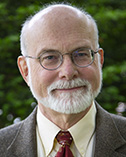
George R. Milner
The Pennsylvania State University
|
Primary Section: 51, Anthropology Membership Type:
Member
(elected 2019)
|
Biosketch
George R. Milner has contributed to both biological anthropology and archaeology through fieldwork and collection-based studies. His research focuses on the population structure and disease experience of past peoples, the organization of early complex societies, and conflict among small-scale societies. Milner was born in Washington DC, and spent his early years in nearby Springfield, Virginia. He received a degree in anthropology from Beloit College in Wisconsin, and then went to Northwestern University in Illinois where he graduated with a PhD in anthropology in 1982. He was a postdoctoral fellow in physical anthropology at the Smithsonian Institution before becoming director of University of Kentucky's museum of anthropology. In 1986, he joined the faculty of The Pennsylvania State University where he later became the head of the department. He has served as president of the Midwest Archaeological Conference and the Paleopathology Association, among other professional responsibilities, and is a fellow of the American Association for the Advancement of Science.
Research Interests
George R. Milner's research integrates aspects of biological anthropology and archaeology to clarify how people?s lives changed over the course of cultural evolution. His studies of human skeletal remains have provided new perspectives on the population structure and disease experience of past communities, notably the effect of ever-changing social and natural environments on health. Long-standing interests include addressing the methodological challenges posed by using mortality (skeletal) samples to characterize once-living populations, and the difficulties in accurately estimating the ages of adults from skeletal remains. The latter work, based on a worldwide sample of modern well-documented skeletons, has practical forensic, as well as paleodemographic, implications. Milner's archaeological investigations are oriented toward providing the appropriate cultural contexts for the people represented by excavated skeletons, including the size, distribution, and growth of past populations, and their relationship to the organizational structure of early complex societies. Through examinations of skeletal remains and settlement characteristics, he has clarified the nature and intensity of conflict among small-scale societies in the past, notably groups that relied heavily on agriculture. Much of his work has focused on the peoples of late prehistoric eastern North America and, more recently, medieval Denmark.

